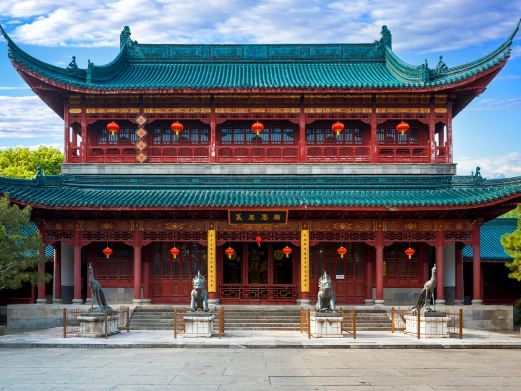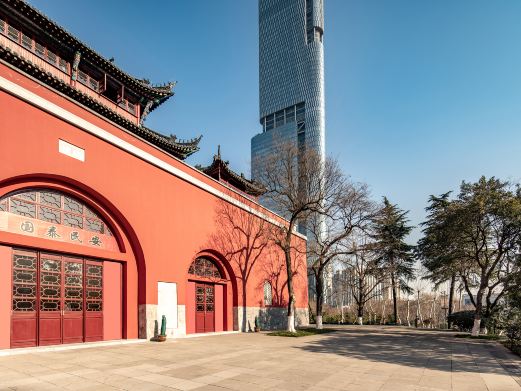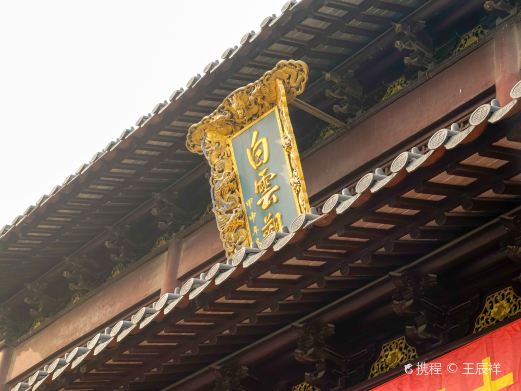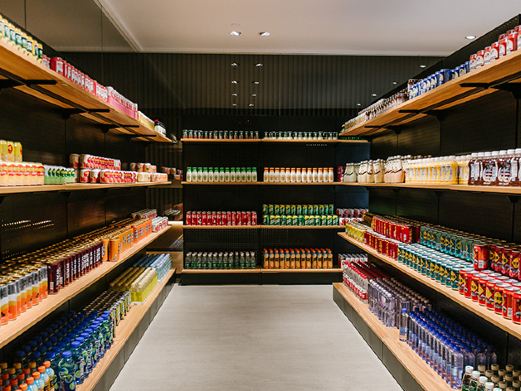The Master-of-Nets Garden is a typical Suzhou garden. Although its area is less than one-sixth of that of the Humble Administrator’s Garden, through ingenious layout, the small bridges, flowing water, pavilions and towers do not appear cramped. It is a model of ‘seeing the big from the small’. In addition to understanding the mystery of the layout, when the night garden is open every year, enjoying folk art performances at night is another major feature here. The Master-of-Nets Garden was originally built during the Chunxi period of the Southern Song Dynasty (1174 – 1189 AD). It was originally the site of ‘Ten Thousand Volumes Hall’. The garden was named ‘Fishing and Seclusion’, which has the same meaning as the current name of retiring from the world. Most of the scenery of the Master-of-Nets Garden we see now are relics after restoration and expansion in the late years of the Qianlong period of the Qing Dynasty. In the center of the garden is a large pond – Cai Xia Chi. All buildings surround the pond. The eastern part is the residential area, the northern part is the study area, the western part is the inner garden area, and the southern part is the banquet and entertainment area. The garden has two gates, the north gate and the southeast gate. The north gate is the back gate, and the southeast gate is the main gate. It is recommended to enter from the southeast gate and tour counterclockwise around the pond to see all the buildings in the garden. In the eastern area of the garden, from south to north, there are the sedan hall, the main hall Ten Thousand Volumes Hall, the Xiuxiu Tower used for the owner’s living and receiving guests, the Wufeng Book House used for storing books (the former site of the Southern Song Dynasty’s ‘Ten Thousand Volumes Hall’), and to the northeast of the Wufeng Book House is the Tiyun Room. Among them, there is a sedan chair in the sedan hall with delicate carvings almost to the point of being hollowed out. The gate towers opposite Ten Thousand Volumes Hall and in front of Xiuxiu Tower both have exquisite brick carvings. The doors and windows of the Tiyun Room have beautiful wood carvings. Pay attention to these points when touring. From the Wufeng Book House, along the north side of Cai Xia Chi, walk west to tour the northern area of the garden. To the west of the Wufeng Book House are the Jixu Studio used by the owner for reading, and the Yizhi Xuan outside the bamboo used by the children of the garden owner for reading. Walking further west to the Kansong Duhua Xuan, it is a place to experience the scenery in the garden. There are pine and cypress trees planted in front of it. Admiring flowers in spring, listening to cicadas in summer, smelling osmanthus fragrance in autumn, and watching snow cover the pine and cypress in winter. The scenery of the four seasons is like a series of paintings. The two words ‘reading paintings’ are very appropriate. Then continuing west, we come to a relatively independent area – the inner garden area in the west. The painter Zhang Daqian once lived in the Dianchun Yi in the inner garden. In order to paint tigers well, he also raised tigers in the courtyard. Later, the tiger died. Now, under the semi-pavilion on the westernmost wall of the Master-of-Nets Garden, we can still see the tombstone erected by Zhang Daqian for the tiger. Walking south, we arrive at the Moon Arriving and Wind Coming Pavilion located in the middle of the western part of the garden. The pavilion is adjacent to Cai Xia Chi and we can see the white walls and black tiles of the buildings around the pond quietly reflected in the water. At night, it is also a good place to enjoy the moon. There is also a large mirror in the pavilion, which plays a role in visually expanding the space. Continuing south and passing through the Zhuoying Water Pavilion, we come to the southern area of the garden. Here there is a music room where the owner plays the qin, and the Daohe Hall used for leisure living.
Ascending the artificial mountain of yellow stones to the east, one can overlook the garden’s scenery. Continuing eastward, passing by the Small Mountain Fragrant with Cassia Pavilion, which serves as the master’s living quarters and guest reception area, one can see a super miniature bridge lying over a small stream, named the ‘Bridge of Serenity’. This small bridge is a famous structure in Wang Shi Yuan Garden, with five steps on each side and can be crossed in just three steps. The bridge is located at the confluence of the stream and the Rosy Cloud Pond, and its small size contrasts with the vastness of the Rosy Cloud Pond, making the garden’s space seem larger. To the north of Wang Shi Yuan is the renowned Suzhou dining and craft specialty street, Shi Quan Street. Not only Shi Quan Street, but also the intersecting Phoenix Street, is abundant with restaurants such as the Old Suzhou Tea and Wine Building and the Harmony Restaurant, which offer authentic Suzhou dishes like squirrel-shaped mandarin fish, oil-sizzling eel paste, and green snail shrimp. Craft items for sale include Suzhou embroidery, calligraphy, and silk. Accommodations nearby include Nanlin Hotel, Suzhou Residence Hotel, and Nan Yuan Hotel. The area also features the scenic spot, Cang Lang Pavilion, which can be visited together. Wang Shi Night Garden is a classic Suzhou tourist product and a well-known tourism brand recognized worldwide, recommended by UNESCO as a specific tourism project. As a long-standing Suzhou night tour specialty, after thirty years of performance and sedimentation, in March 2021, Wang Shi Night Garden returned with a brand-new experience upgrade! The new night tour of Wang Shi Garden adds a richer sense of participation and experience. Combining garden scenes with intangible cultural heritage performances and installation art, and integrating fragrances through air sachets to bring a delightful mood and viewing experience from all aspects of ‘form, sound, smell, taste, and touch’, Wang Shi Garden’s ‘extreme beauty of a small garden’ is effectively expressed at night. The night tour performance includes programs such as storytelling, Kunqu Opera, Kunqu singing, Kunqu dance, flute, xiao, and ancient zither, with a total duration of about 45 minutes. Breaking the conventional passive viewing, the audience actively explores the garden’s story clues, moving through different scenes and experiencing a play every ten steps, using the garden to showcase intangible cultural heritage and using intangible cultural heritage to interpret the garden. Opening hours from March 1st to October 31st are 07:30 to 17:30; from November 1st to February 28th, they are 07:30 to 17:00.
Preferential policies: Children under 1.4 meters in height (inclusive) and under 6 years old (inclusive), with valid identification, enter for free; minors aged 6 to 18 years old (inclusive), with valid identification, receive preferential tickets. Students: Full-time university undergraduate students and below with valid identification receive preferential tickets. Elderly: Elderly people aged 60 to 70 years old (inclusive) receive preferential tickets with valid identification; those aged 70 years old and above enter for free with valid identification. Military personnel: Active-duty military personnel of the People’s Republic of China with military identification and retired military officers with retirement certificates enter for free. Disabled people: Enter for free with a Disability Certificate; severely disabled individuals requiring accompaniment can have one accompanying person enter for free. Free preferential objects: With the ‘People’s Republic of China Veterans’ Preferential Certificate’ and ‘People’s Republic of China Martyrs, Military Personnel Who Died in the Line of Duty, and Deceased Military Personnel’s Dependents’ Preferential Certificate’ (excluding garden within the garden, garden charges, and night tour projects), enter for free. Suzhou medical staff: On International Nurses’ Day on May 12th and Chinese Doctors’ Day on August 19th, medical staff in Suzhou can visit the scenic area for free within seven days (May 12th to 18th, August 19th to 25th).
For medical personnel in Suzhou City, when visiting the scenic area, please show ‘personal ID card’ + ‘Suzhou medical personnel free park card (electronic card)’. They can enter the park directly without reservation and are exempted from the first entrance ticket fee.
Free service facilities: WIFI: Account: Master-of-Nets Garden; Password: No password; Scope: Tourist service center in the scenic area. Luggage storage: Reference price: Free. Scenic area interpretation: Manual interpretation services are provided at the sedan hall entrance of the scenic area. Cost: Free tour guide service (free interpretation times are: 8:20/9:00/9:40/10:20/11:00/12:30/13:10/13:50/14:30/15:10/15:50); Paid tour guide service (1-5 people, 60 yuan; 6-10 people, 80 yuan; 11-20 people, 100 yuan; more than 20 people, 140 yuan). Toilet: There are multiple toilets in the Master-of-Nets Garden scenic area, which are located near Yunku and Louhuaguan respectively and are marked with eye-catching signs.
The Master-of-Nets Garden
The Master-of-Nets Garden is a typical Suzhou garden. Although its area is less than one-sixth of th[...]









